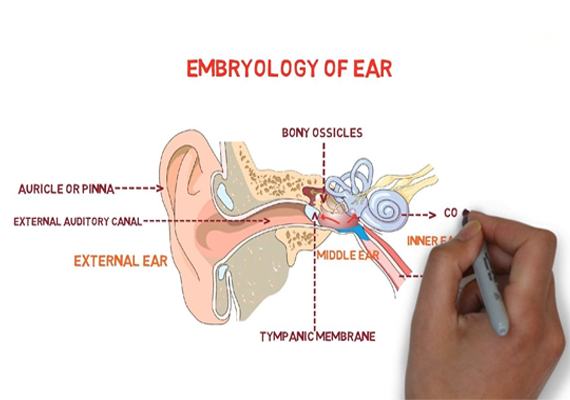

Embryology is the study of the origin and development of single individual embryo in prenatal period.

The middle ear cavity and the auditory tube arise from first pharyngeal pouch called the tubotympanic sulcus, lined by endoderm.

Early in the 4th week, a thickening of the surface ectoderm on each side of the hindbrain called otic placode forms otic pit and finally form the otic (auditory) vesicle. Membranous labyrinth arises from this ectodermal invagination from otic placode.